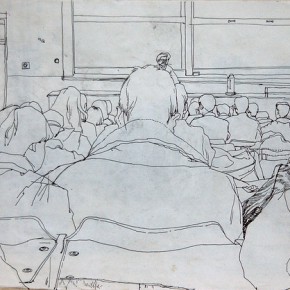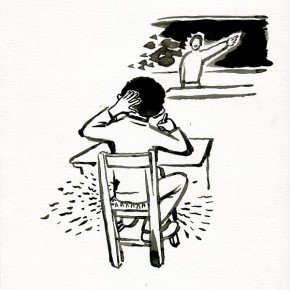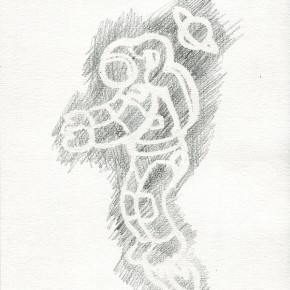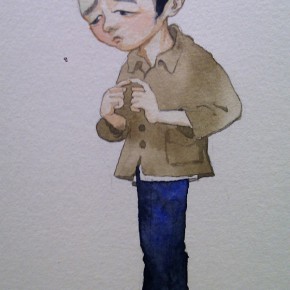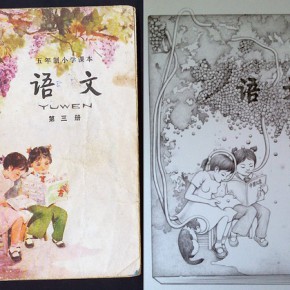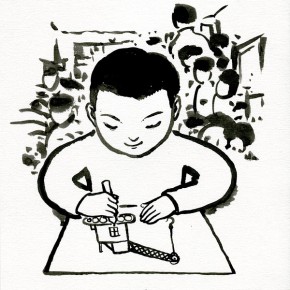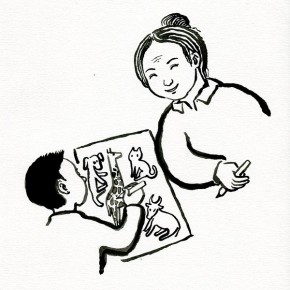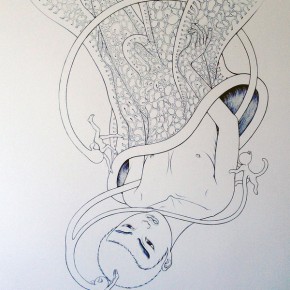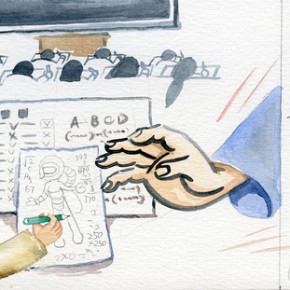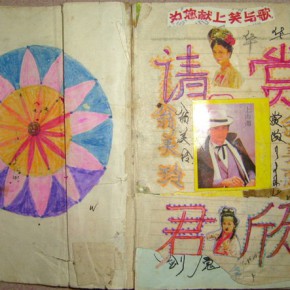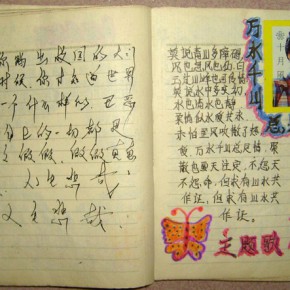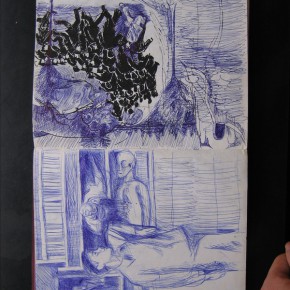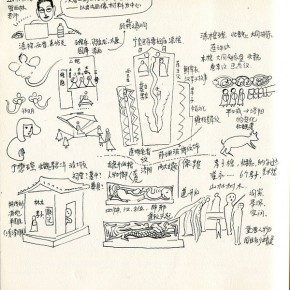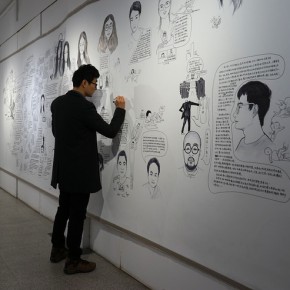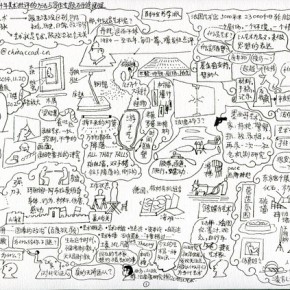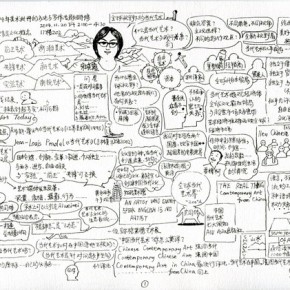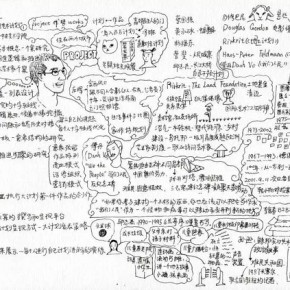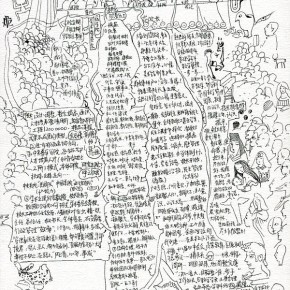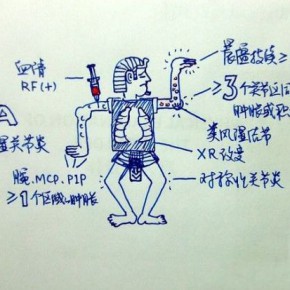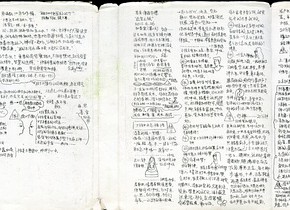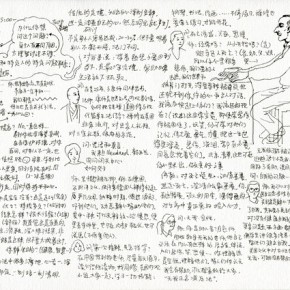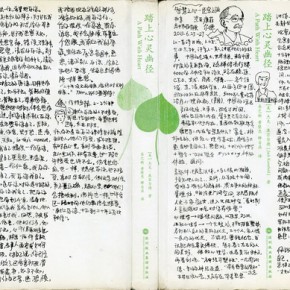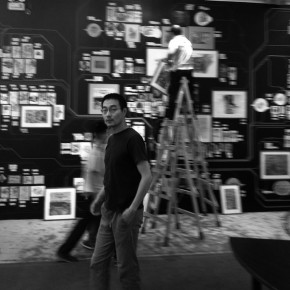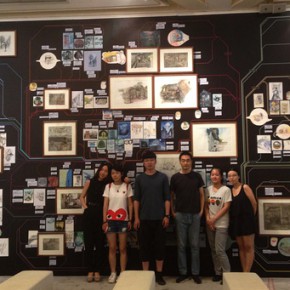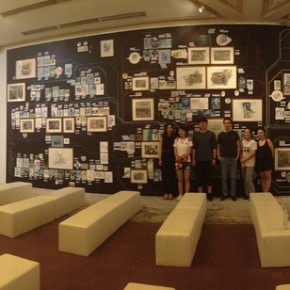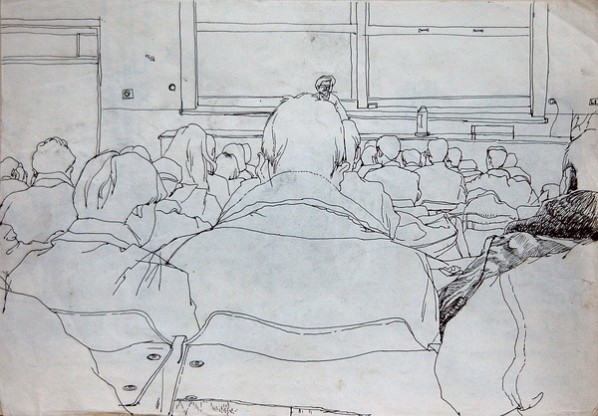
We live in a society that pays much attention to classroom teaching. In the learning process of students, they have spent a lot of time sitting in the classroom no matter whether they would like to or not, they are asked to “concentrate on listening”. People demand that they follow the rules, being serious, respectful, refusing any distraction. This is a culture of shaming while in private, there are countless tales, many emotional events, countless little affectations and ideas that are constantly arising from the serious and decent class and the students always enjoy it, so it is a perpetual game between teachers and students.
When I was a student in the elementary school, I was once called the “Hyperactivie” by the teacher, because when sitting in a quiet and orderly classroom for a long time, I could not help twisting my body, always I would have pins and needles, looking all around me and the worst thing was that I would doodle! So that I was criticized by the teacher and I always felt guilty!
Drawing became a tool for expression and enhanced the emotions with some of my relatives and friends. For example, when I was four or five years old, my grandma regularly had “diathermy” treatment in the local hospital, I always accompanied her, when she drew something, I would draw another one to follow her, like a dialogue and game of drawing, it was a happy time or us and even the doctor repeatedly praised that.
Many times, when I walked in between the rural and urban areas, I paid attention to children’s graffiti and advertising slogans (the legal and illegal) on the walls, which obviously contained countless joys, sorrows, visions and imaginations.
I failed in becoming a student at an ideal university, which made me depressed. Then I tried to scrawl the dreams that I had before. Sorrow was like water, flowing through to the tip of a pen and I was suddenly enlightened.
Most of the time I forced myself to focus on the lesson that each teacher delivered in the classroom but it was ineffective, and I was always distracted. I would inattentively scrawl little people on the edges of the notebooks, after enjoying it I was confused. Until I really became a doctoral student in CAFA, one day I was down and weary when entering the usual classroom, which was full of cut-and-dried contents. Once again I drew a variety of imagined small creatures after writing down a few concepts as told by the teacher. Those magic things under the brush suddenly inspired me: at the moment, it seemed that no one would correct my “smuggling” defect. I could trustingly place the interesting lectures by teachers and the freely imagined cranky images which constantly happened in the stream of consciousness together. It was no longer regarded as a secret pastime when I was bored, it was regarded as a serious thing to do, graffiti was solemn - I finally got the legal status of “scribbling notes”. Gradually, my emotions escaped from the low place and the disordered situation, and more and more focused on the course content, I felt I had harvested quite a lot by the end of the course, and the whole person looked brand-new again!
Nobody will ever come to stop me and capture the behavior, only the happy sharing and praise is left! In the course of “self-expression”, my tutor Lv Shengzhong once saw my scribbled notes, and encouraged me to draw a ten meters long painting.
After preliminarily drawing hundreds of notes, my feeling was that: the mixture of drawing graffiti in the notes and the textual concepts is a symbol of dialogue and integration of the logical rationality of the left brain and the sensible imagining of the right brain. It is a solemn and witty understanding and experience of the listener to the lecture, of the individual in the big classroom. For the vibrant inspiration and instant humorous reflection of the flying-around “distractions” which happen at any time in the classroom, it is a good way to promote some people more dedicated and relaxed to the abstract and allowed for the digesting of the class content.
We always hope to gain the ability of concentration, but people are often distracted in class, which is some times piteously accepted by us. The well-known writer Joyce even wrote a masterpiece “Ulysses” in the name of the “stream of consciousness”. (It is certain that writing this book required a great deal of concentration and awareness of the contrary perspective)
Surrealist art also developed the creative way of “automatic writing” and “automatic painting”. The more you feel remorse about involuntarily distraction, the further the thought floats away, more mental energy is dissipated, and even loses interest and enthusiasm for this course. Drawing notes would bring together the content heard in the class and meetings, and the contents of distraction, shortening the length and breadth of distraction.
The person who is writing and drawing, their thoughts cannot run far, basically living for the moment, in the place. Feeling the subtle change of the tip of a pen touching the surface of paper is a practice of perceiving and experiencing. Using the seemingly most casual way to focus on the content of the lecture, while relaxing, easily and happily, activating the nervous classroom. It is also possible to turn the serious and nervous class into a happy and relaxed class. Therefore, could we call it the Zen notes?
The notes from of the writing and drawing together has formed a big trend in recent years, such as “hobonichi”, “scrapbook”, the best medical student’s notes, are similar practices, which do not chip away but things are worth cherishing.
The most recent drawing notes were a precious memory from a 3-day course that I participated in entitled “Trip to Return Treasure (meaning bringing back the Zen that came from China but rapidly developed in the Western world in recent years from China for discussion)” by the American teacher Jack Kornfield, who integrates psychology and Buddhism. We were deeply touched by the peaceful, deep, merciful, uncontrolled, rational and artistic atmosphere, chasing every word in the class and I had no time to be distracted, instead I was deeply moisturized by the great Eastern spiritual traditions.
Teachers often emphasize that it reaches anatman on the basis of the fully and healthy development of the ego and drawing notes might be one of the ways for me to reach the healthy and complete ego. According to the drawing notes, I recall many things beside the knowledge taught by teachers. Compared with the rigorous on-site record or recording, perhaps it is far from objective and refers to the living personal memories of atmosphere, smell, feeling and mood in the classroom at that time.
When the classmates in the course expressed their surprise and appreciation for my notes and asked me why I had drawn it, I recalled one word said by the ancient teacher, it’s meaning was that everyone had his/her own different gift and mission when he/she came to the world, in order to offer people a unique service and help. Perhaps, the seemingly insignificant scribbling notes is also my talent and mission, is also one of the means of serving society. Perhaps I was born with the plan. In such a case, they are my “Drawing Notes Zen”.
Following on from this, I used this way to create the work “When I was Seventeen Years Old, I Did Dream of All the Things”: These dreams happened in the period while society was developing in leaps and bounds. It seems that we were close to being rich and well-off. The artworks expressed the grand and magnificent attributes of external events flew over peoples’ heads. However, at that moment, countless inner experiences of kinship, family, war, revolution, movement, starry sky, nature, mountains and rivers, animals, plants, objects, ghosts and gods, different genders, the masses, education, community, institutions, a previous life, tragedy, comedy, wounds, kindness, future, imagination, the individual and collective subconscious memories, always profoundly affect people located in the peaceful and developing tide. These memories also appeared in my dreams. So I considered myself as a pipeline and vessel, to record, analyze and describe the relationship to more than four thousand dreams. This work showcases more than two hundred dreams during my youth. They are classified as induction, description and analysis and presented in the form of text and the large group of paintings.
In Wangjing Dream Institute, on July 14, 2015, Tuesday
Li Yang Painted DreamCourtesy of the artist, translated by Chen Peihua and edited by Sue/CAFA ART INFO.


